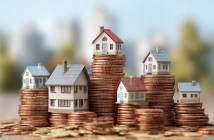The spike in consumer prices that left inflation at a four-decade high of 6.8% in November prompted the Federal Reserve to dramatically shift its approach as it eyes earlier and faster interest rate hikes.
The Fed has kept its key short-term rate near zero since the COVID-19 pandemic triggered a deep recession in March 2020. At a two-day meeting that begins Tuesday, Fed officials are likely to accelerate the phaseout of their bond-buying stimulus to clear the way for rate increases as early as March.
Here’s a breakdown of what could happen:
What is the Fed expected to do?
The central bank is likely to announce that it will more rapidly reduce the amount of Treasury bonds and mortgage-backed securities it has been buying to hold down long-term interest rates, economists say. In early November, the Fed said it would cut its $80 billion in monthly Treasury purchases and $40 billion in mortgage purchases by a total of $15 billion each month, a timetable that would end the purchases by June. Many economists say the Fed will agree to double the pace of the winding down to $30 billion monthly, halting the purchases as early as March.
Why should I care?
Fed Chair Jerome Powell said officials probably would not want to add support to the economy by buying bonds at the same time they’re pulling back support by raising rates. As a result, the Fed looks to conclude the bond purchases sooner, so it has the flexibility to lift rates by early spring if inflation doesn’t ease substantially. Previously, economists didn’t anticipate the Fed’s first rate increase until June or later.
Is that a big shift?
Yes. A couple of months ago, Powell and other Fed officials said they believed the inflation surge was transitory – sparked by big price jumps for pandemic-related items such as used cars, airline flights and hotel stays. The increases broadened to other items – including food, rent, gasoline and furniture – and the supply chain bottlenecks causing much of the inflation are proving persistent.
At a congressional hearing, Powell said, “I think it’s probably a good time to retire that word (transitory).”
When will the Fed raise interest rates?
In September, Fed policymakers forecast one rate hike next year. In projections set to be released Wednesday, the officials are likely to predict two rate increases in 2022 and stick with their estimate of three more in 2023, predicts Barclays economist Jonathan Millar. Michael Feroli of JPMorgan Chase expects Fed officials to raise rates in three hikes next year.
Will higher rates affect consumers?
Fed rate hikes typically mean Americans will pay a little more for everything from mortgages and car loans to credit card bills and student loans. But bank savings and CD rates also should rise, helping seniors and other savers.
How about investors?
Faster tapering of the bond purchases and earlier rate hikes have been priced into stocks, which sold off in response to speculation about the Fed’s plans, Millar says.
Could inflation ease by early next year, keeping the Fed from hiking?
The supply chain bottlenecks have started to ease, Morgan Stanley and Moody’s Analytics note. Price increases should start moderating but not by enough to keep the Fed from acting as soon as March, Millar says. Goldman Sachs looks for the first hike in May while Morgan Stanley bets on September.
Keep in mind that the Fed vowed to keep its key rate near zero until inflation hovers above its 2% target “for some time” and the economy reaches full employment. So even if inflation eases, the first condition has been met, and with unemployment at 4.2%, the economy is close to satisfying the second, Millar says.
What if inflation cools by the second half of the year. Will the Fed keep hiking?
That’s a good question, says Millar, who expects inflation to fall below the 2% goal by later next year. The Fed, he says, may want to keep raising rates if unemployment is at rock bottom to head off a potential inflation surge. That could be politically tricky if price increases dip below the Fed’s target.
Will higher inflation rates ease inflation?
Normally they do. Higher rates should mean fewer home and car purchases and possibly less credit card usage. Less consumer demand, in turn, should mean more modest price increases. But Americans are still flush with cash from stimulus checks and itching to travel and do other activities again, Millar says, so it’s uncertain how much they’ll pull back. The inflation bout is mostly caused by the supply snarls, which won’t be affected by rate hikes.
Higher rates could temper stock market gains, curbing the additional purchases people make when they feel wealthier.



